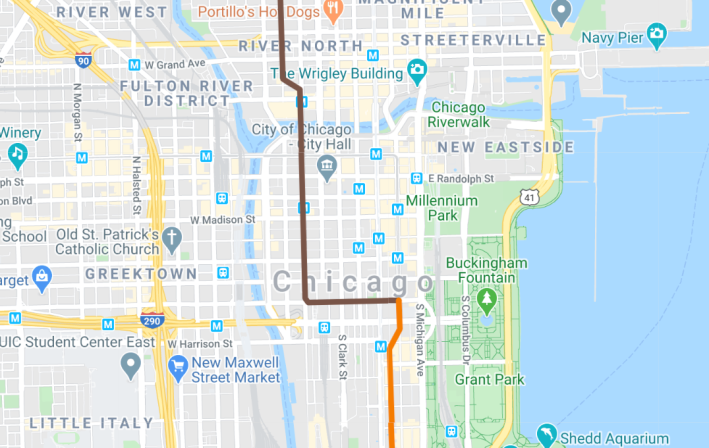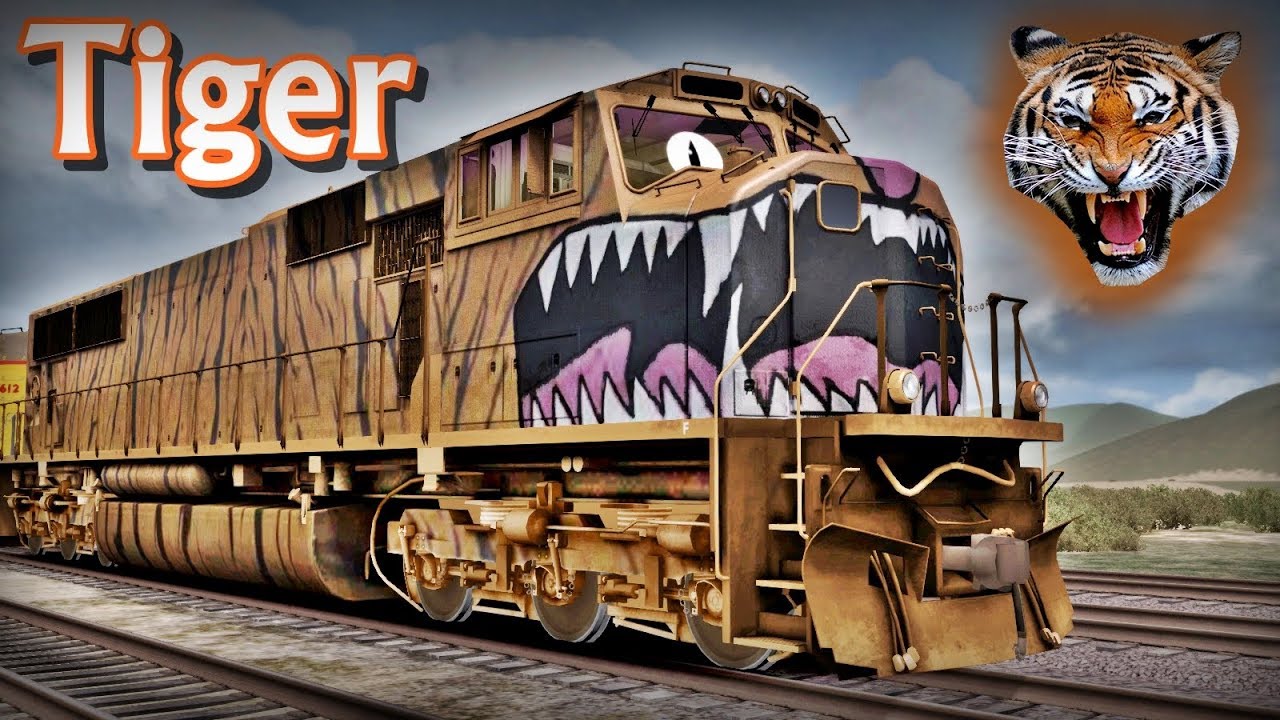The other day I tweeted out a quiz about which directions the various CTA lines travel around the Loop Elevated tracks -- clockwise, counter-clockwise, both, or not at all. During the ensuing conversation, someone brought up a subject I'd heard rumors about but had never actually experienced myself, or gotten confirmation on: weird Orange Line runs that become Brown Line trains when they reach the Loop, and then turn back into Orange trains after they return to the Loop.
CTA spokesman Brian Steele told me the rumors are true, although the route isn't exactly as described in that tweet. In fact, the agency has a special name for these runs, "tiger trains" (because they alternate between Orange and Brown -- get it?) Some CTA employees refer to them as the "Borange Line."

There are, in fact, six tiger trains a day during the A.M. rush, eight-car runs originating in the train yard at the Midway Airport station. After the Roosevelt stop, rather than turning left, clockwise, around the Loop tracks, like a normal Orange train would, they continue straight to go counter-clockwise around the Loop like a Brown train. At Wells Street, they head north over the river to the Merchandise Mart, and then continue on the end of the Brown Line at the Kimball station in Albany Park.
On the return trip, after leaving the Merchandise Mart and heading south into the Loop, they continue straight and go counter-clockwise around the tracks, Brown Line-style, before heading south out of the Loop and southwest to Midway.

According to Steele the purpose of these bizarro runs is to address ridership demand on the Brown Line. "The Kimball yard simply doesn't have enough capacity for all the trains that are needed for the Brown Line morning rush," he explained. "But obviously six trains with a [packed] capacity of about 800 people can carry a significant amount of riders."
Steele said he hasn't heard of any complaints from riders who've accidentally wound up on the wrong side of town, or have been otherwise inconvenienced by the tiger train runs. At Roosevelt and Merchandise Mart, the signage and colors of the trains change, and the operators also make several announcements that passengers need to switch trains if they want to continue on the normal Orange and Brown routes, respectively.
So it might be a minor annoyance, for example, if you live near Midway and work at the Sears Tower, and find yourself on a tiger train that's not going to stop at the Quincy station, near the tower. That would force you to transfer to a normal Orange train at Roosevelt. But Steele noted that that probably wouldn't cause a major increase in your total travel time because the headways are so short at that time of day.
So why doesn't the CTA use a similar strategy to relieve overcrowding on the Blue Line? That line's O'Hare Branch is often sardine-like in the mornings, partly due to the recent transit-oriented development boom in neighborhoods like Wicker Park and Logan Square. It turns out that there are few reasons. For starters, yard capacity isn't an issue on the Blue Line, since there's plenty of space at the Rosemont and Forest Park, Steele said.
Rather, he said, "We simply do not have adequate power on the line to add more trains." The CTA is currently upgrading three existing electrical substations, which that convert regular alternating-current electricity from the power company to the direct-current power that’s needed for their trains, and adding a new one. The agency says that these investments, plus signal upgrades, will allow them to run more trains in the future.
But even if a tiger train-type strategy made sense, it wouldn't be an option on the Blue Line because the trains run in their own downtown tunnel and lack "interchangeability" with other lines, Steele said. In contrast, the CTA has the option of running Red Line trains "over the top" on the Loop tracks when there are issues in the Red Line subway, such as track fires.
So there you have it. If you've ever ridden a tiger train, tell us about the experience in the comments. Otherwise, maybe you can earn your stripes by riding one of these rare beasts some time during the A.M. rush,






